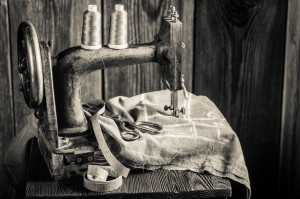 So many of humanity’s greatest inventions are the work of well-known historical engineers. Some of our most primitive inventions like tools, the wheel and even fire were works of the top engineering minds of their respective times of development.
So many of humanity’s greatest inventions are the work of well-known historical engineers. Some of our most primitive inventions like tools, the wheel and even fire were works of the top engineering minds of their respective times of development.
Of course, some modern luxuries are also clearly fetes of engineering, like running water, skyscrapers and our cars that seem to get more unbelievably futuristic every day! Usually when we imagine inventions that are prime examples of engineering genius, we do tend to think exactly like this, we think primarily of inventions and new state of the art craftsmanship. Today, we’re interested in exploring some everyday products invented by engineers that you might not have ever imagined were complex engineering masterpieces. These items represent how most of our daily-use items are so much more complex and interesting than we ever could have imagined.
Far too often, people are categorized by whether they are an artistic person or a scientific person. This is unfortunate, because so often, scientific discoveries lead to new ways to express creativity. Just as we wouldn’t have paint without scientists mixing different pigments and different suspensions from nature, we wouldn’t have sewing as we know it today without a few wonderful structural engineers from the late 18th and 19th Century. Before the sewing machine, wearable garments took hours of time and significant effort to produce. The process was limited by the amount of free time someone had in a day, how practiced they were, the quality of their materials and also just by human error in general.
We often think of the “old days” as a time when everyone made their own clothes, but this is a common misconception. Most of the 18th and 19th century, the early Victorian Era especially, people only made their own clothes if it was absolutely necessary due of lack of funds. This is because hand-sewing the garments of the day was such a time consuming and daunting task that most people did not have time to sew their own clothes, and often opted to hire a tailor or dressmaker instead. Home sewing didn’t become a viable option for most people until the first commercially successful sewing machine in the 1850′s. Invented by Elias Howe and produced by Isaac Singer, the first iteration of the modern lockstitch machine we know today hit the market in 1860. This machine was completely mechanical, using a series of what are known as simple machines in engineering, like pulleys.
This machine consisted of dozens of complex parts that had to work together structurally, and couldn’t have been developed without an engineers mind
Like we discussed with the sewing machine, fashion and wearable garments don’t often come to mind when we think of engineering inventions. However, in order to make wearable garments that are effective, it takes someone like an engineer to understand what the item must be able to withstand. The next engineering invention is a prime example of this necessity, the athletic shoe. Throughout most of the 18th and 19th century, most shoes people wore were a variation on the boot. Most shoes consisted of leather uppers and wooden soles, which worked well for what they were made for. Activities like walking long miles on cobblestone or working in harsh conditions were perfect for shoes such as these.
However, in the mid 1800s, a new trend was starting to grow, the trend of health and fitness. At this time the tuberculosis epidemic had been ravaging Europe for a generation, and people wanted to start focusing on taking care of themselves and being healthy, and so from that, the athletic shoe was born. This shoe was produced by engineers at the Liverpool Rubber Company, who had tested various different prototypes for how they would withstand different types of fitness. They tested structurally how much force they could take, and how they would act in different weather environments outside. These are all factors of structural engineering, and the sneaker is a feat of structural engineering
One of the earlier inventions that is such a cool example of engineering at its best is the pendulum clock, which technically has many inventors, all strong examples of historical engineering masterminds. Some of these minds include Galileo and Christiaan Huygens. The pendulum clock works on the basis of continuous oscillation in a fixed cycle, or in laymen’s terms, the fact that if a pendulum swings back and forth continuously each swing will last the same amount of time. This invention changed the way that humans tell time by being able to measure smaller and smaller increments of time
The sewing machine, the athletic shoe, and the pendulum clock are all great examples of the fact that most inventions require a good engineering eye to develop, and at McNeil Engineering we are so excited to have even a small part in engineering history. We look forward to continuing to learn and grow, furthering technology and discovery forever.








